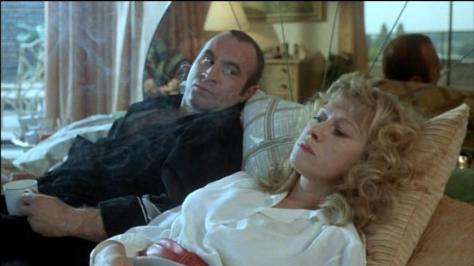By Dennis Hartley
(Originally posted on Digby’s Hullabaloo on July 5, 2014)

When the long-running TV program At the Movies quietly packed its bags and closed the balcony for good back in 2010, I wrote a piece about the profound impact that the show had on me in its various incarnations over the years; first as a film buff and later on as a critic:
Back in the late 70s, I was living in Fairbanks, Alaska. This was not the ideal environment for an obsessive movie buff. At the time, there were only two single-screen movie theaters in town. And keep in mind, there was no cable service in the market, and the video stores were a still a few years down the road as well […] Consequently, due to the lack of venues, I was reading more about movies, than actually watching them. I remember poring over back issues of The New Yorker at the public library, soaking up Penelope Gilliat and Pauline Kael, and thinking they had a pretty cool gig; but it seemed like it was requisite to actually live in NYC (or L.A.) to be taken seriously as a film critic (most of the films they reviewed didn’t make it out to the sticks) […]
Then, in 1978, our local PBS affiliate began carrying a bi-weekly 30-minute program called Sneak Previews. Now here was something kind of interesting; a couple of guys (kind of scruffy lookin’) casually bantering about current films-who actually seemed to know their shit. You might even think they were professional movie critics […] In fact, they were professional rivals; Roger Ebert and Gene Siskel wrote for competing Chicago dailies […] This underlying tension between the pair was always bubbling just under the surface, but imbued the show with an interesting dynamic […]
One thing these two did share was an obvious and genuine love and respect for the art of cinema; and long before the advent of the internet, I think they were instrumental in razing the ivory towers and demystifying the art of film criticism (especially for culturally starved yahoos like me, living on the frozen tundra).
After Siskel died in 1999, Ebert kept the show going whilst essentially auditioning an interestingly diverse roster of guest critics for several months, with fellow Chicago Sun-Times reviewer Richard Roeper eventually winning the permanent seat across the aisle. Ebert remained a stalwart fixture until 2006, when treatment for his thyroid cancer began. Of course, Roger Ebert’s life journey didn’t end there, just as it had already taken many twists and turns before his fame as a TV personality. In fact, it is these bookends that provide the most compelling elements in Life Itself, a moving, compassionate and surprisingly frank portrait from acclaimed documentary film maker Steve James (Hoop Dreams).
The film covers the full breadth of Ebert’s professional life as a journalist; beginning with his fledgling days as a reporter and reviewer for The Daily Illini while attending the University of Illinois in the early 60s, to his embrace of new media during that personally challenging (and very public) final chapter of his life, wherein he was able to reinvent himself as a sociopolitical commentator (which he pursued with the same passion, candor and intelligence that defined his oeuvre as America’s most respected film critic).
Despite the fact that the film was made with the full blessing and cooperation of its subject (and his widow), this is not a hagiography. To be sure, Ebert was a gifted, amazingly prolific Pulitzer Prize winning writer, the premier film critic for The Chicago Sun-Times from 1967 until his death in 2013, an instantly relatable, beloved TV personality with a killer hook (“Thumbs up!” or “Thumbs down!”) and by most accounts an engaging raconteur and generally warm and empathetic human being…but he was, after all, a human being. He could also be arrogant, obstinate, and petty (James includes some eye-opening outtakes from At the Movies that are quite damning). He had a long-time battle with the bottle (which he freely admitted, in interviews and in his memoir).
Yet he also showed us, at the end of it all, how silly it is to sweat the small stuff, and how important it is to follow your bliss, in spite of circumstance. Ebert’s insistence that the director not shy his cameras away from the hellishness of his final months may seem morbid (and granted, the unblinking nature of that footage is difficult to watch and may even be a deal breaker for some viewers), but in hindsight I think it was his way of reminding us of the old proverb: “I cried because I had no shoes…until I met a man who had no feet.” Yes, he suffered terribly, and became physically unrecognizable as the same erudite, Falstaffian Everyman who sat across the aisle from Gene and bantered about the latest Scorsese film on my little 13 inch TV with rabbit ears and fuzzy reception all those years ago; but he never lost the muse, or his true voice, which came through in his prose.
I have to say it. I’m giving this film a thumbs up. Until next week…the balcony’s closed.




















